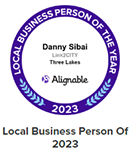The Anatomy of a Perfect Website
Whether you’re just starting out or if your current site could do with an overhaul, there are some elements that should just not be skipped over when building a website.
The million dollar question is however; what makes a great website?
At the end of the day, in my opinion – a great website is one which meets the following rules:
- Content
It’s simple – if a user can’t find information they are looking for, they have no reason to be on your site. You need to make sure content is easy to find; and in a variety of ways.
Google itself considers the freshness of a websites content a massive importance when determining PageRank and relevance. SEO-wise, make sure you keep your homepage fresh and beaming with new content – but importantly, do not neglect your inner pages as well.
Web copy should be concise, snappy and engaging. It is best to get straight to the point, sticking to single paragraphs and incorporating your key points at the outset. It is also important to speak the language of your audience, ensuring that you are using the right tone and terminology while avoiding industry jargon.
- CMS
A good in-house content management system gives businesses the ability to manage and update their own web content. This removes the cost of an external developer every time change is required. Although the initial investment could be slightly higher, in the long run this approach will save time and money.
- Look and feel
You really need to make sure you look into your website design. It doesn’t have to be glitzy and glow; just appealing to look at.
I’ve seen numerous websites with an amazing idea or great content that fail to convert due to bad design. If you can’t get your website to look ‘amazing’ – meet the user half way and at least promote a sense of structure and conformity.
Make sure your logo is on the top-most left section of the website. Same goes for your site search (if any) and top-level navigation. Make sure you try to keep everything consistent! Colours, headings, everything! Consistency above all means that users find it easier to connect to your website and also get more a feel for how everything works.
- Focus on user
Make sure you check how your website, and more importantly, links – look to someone who suffers from varying degrees of colour blindness. You might think that checking things like that are ‘way too left-field’ – but something as simple as this can mean the difference between someone with colour-blindness not being able to distinguish between your linked content and non-linked content!
Make sure there is always a way out for the user. A top navigation, side navigation, search and links back home are great players in this field. No matter how good your website is, there will always be users who get lost along the way.
- Site architecture
Your website structure needs to make sense. Top-down, there should be a logical flow. The header should come first, followed by navigation (if not already part of your header section), followed by the content with any sidebars or side-navigation, and ultimately followed by the footer of the page.
Footers are just as important as headers. A good footer helps the user determine if the page has fully loaded. If the user doesn’t see what they are used to seeing at the base of your page, they should know that the page has not fully loaded yet; bet you didn’t think about that one!
- SEO
It is one thing to have a website, but it’s another for your website to be found among the millions of others. It’s important for business websites to have high search rankings. This can be achieved through Search Engine Optimization (SEO), a technique that helps search engine bots, like Google’s bot, find your website.
- Tracking success
Great websites learn from their mistakes! Use tools such as Google Analytics to help you determine popular and not-so-popular sections of your website. See if you can get down to the reason why ‘x’ is not as popular as ‘y’.
Check out the image below – it takes you step by step through the important points to consider when designing a website.






























